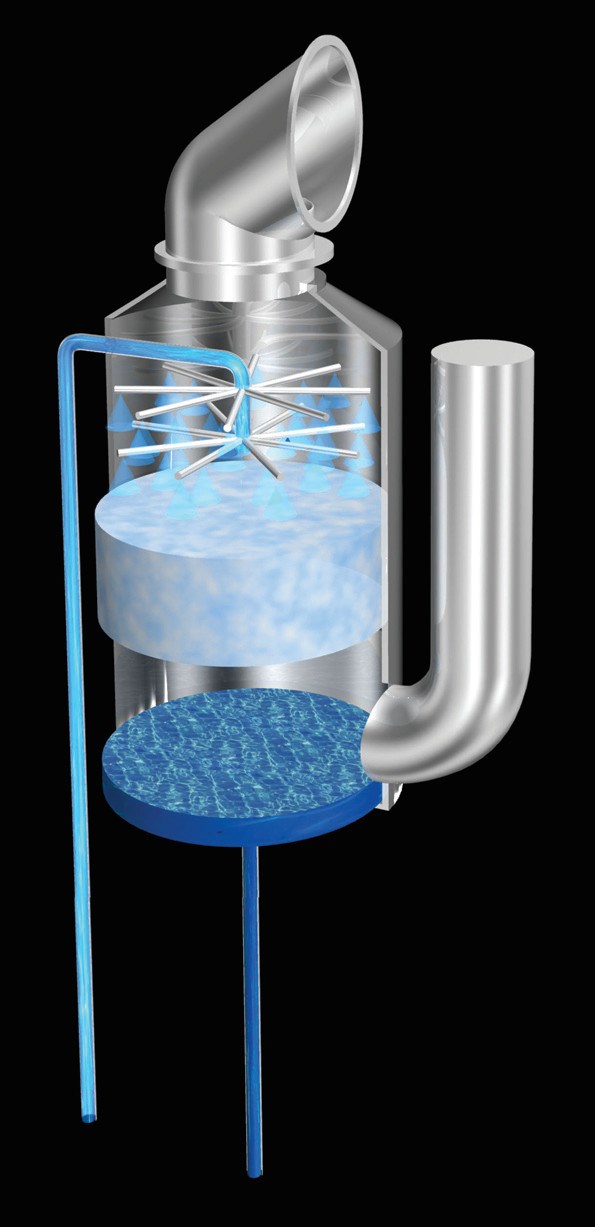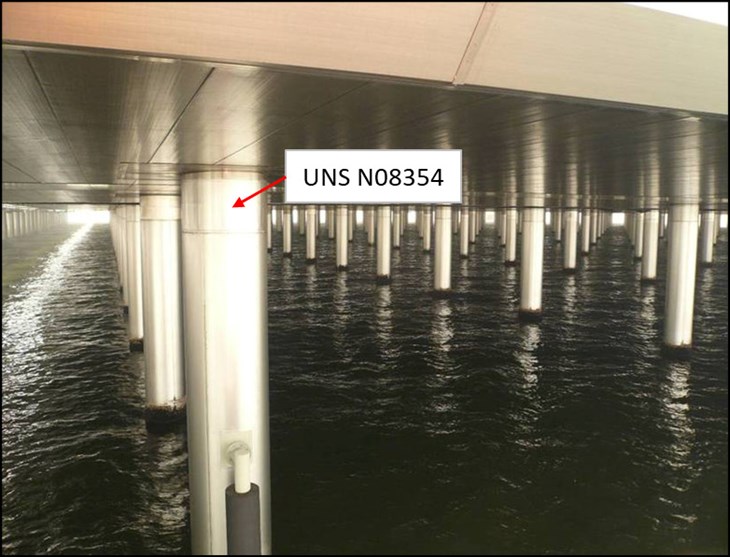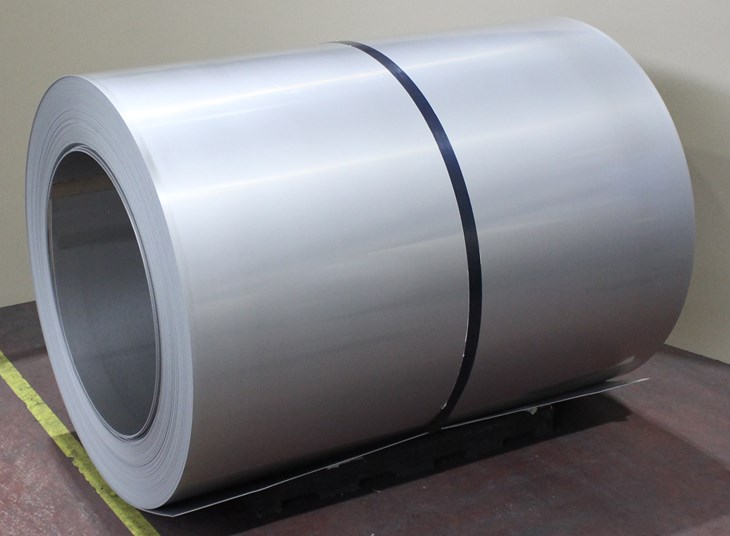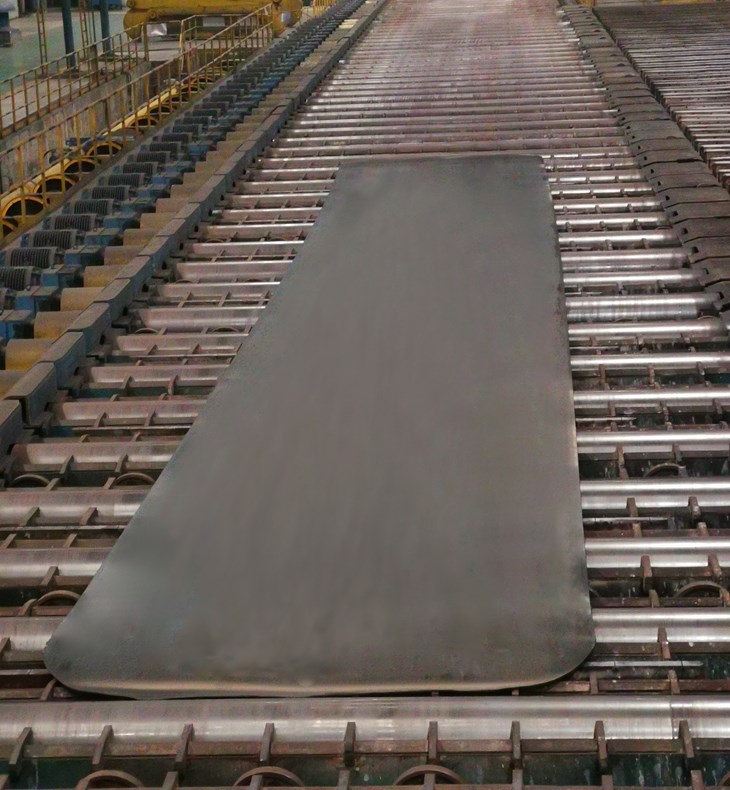By Brittani Schroeder.
The business environment in the stainless steel and specialty alloy industry has experienced great changes in recent years, not only from factors such as the expansion of the Chinese economy, the deceleration of its growth, and the clarification of responses to environmental issues and global warming, but also from the severe effect of the spread of the novel coronavirus on the global economy.
Given these structural changes in its business environment, Nippon Yakin has worked to determine which policies it must implement over a three-year period (beginning in April 2020) in order to achieve resilient and sustainable growth for 2025. This Mid-Term Business Plan 2020 envisions Nippon Yakin as a global supplier that continues to inspire trust through industry-leading quality, delivery, and support.
The chief policies of the Mid-Term Business Plan 2020 are to promote sales of high-performance materials through deeply cultivating markets in the environmental and energy industries; to expand product lines through joint ventures with Chinese companies; to implement facility function reform that includes high-efficiency electric furnaces; and to bolster and expand the core technologies behind high-performance materials. Nippon Yakin has already begun implementing these strategies, especially regarding the use of stainless and high-performance alloys in desulfurization technologies.
High-performance materials
A strong focus is placed on expanding the use of high-performance materials in the growing field of the environmental and energy industries, where desulfurization technology is a main focus. A prime example of this strategy in action comes in the company’s supply of material for sulfur oxide (SOx) scrubbers for shipping vessels. SOx scrubbers purify exhaust gases with seawater showers, decreasing the gases’ SOx content. The inner workings of the scrubbers are sulfuric-acid environments that contain seawater; general purpose stainless steel corrodes in these areas, making high-performance materials necessary. Materials in use for this application include duplex stainless steel, super duplex stainless steel, super austenitic stainless steel, and nickel alloys, with each selected as appropriate for the scrubber manufacturer’s design and usage position.
SOx scrubbers have become important in the shipping industry due to increased regulations policing SOx in exhaust fumes. Namely, the International Maritime Organization (IMO) expanded regulations in 2020 to apply to oceans across the globe, mandating a maximum sulfur content of 0.5% in marine fuels globally.
As a result of this wide-reaching change in policy, Nippon Yakin has intensified its initiatives in this field as part of the first prong of their Mid-Term Business Plan 2020.
As stated previously, scrubbers use a variety of materials that have a strong resistance to corrosion, of which Nippon Yakin has produced an expansive lineup: UNS S32205 and UNS S32506 duplex stainless steels; UNS S32750 super duplex stainless steel; UNS S31254, UNS S32053, UNS N08367, and UNS N08926 super austenitic stainless steels; UNS N08020 stainless steel, which is highly resistant to sulfuric acid corrosion; and UNS N10276 corrosion-resistant nickel alloy, among other products.
Nippon Yakin uses its networks in Japan and overseas to share information from around the globe and pursue efficient sales promotion activities. Due to the recent slump in crude oil prices stemming from the novel coronavirus issue, the price difference between traditional fuel oils (heavy oils) and low-sulfur fuel oils has shrunk; as a result, investment in scrubbers is currently stagnant. During the next several years, however, demand for the high-performance materials required for SOx scrubbers is expected to be strong.

Flue-gas desulfurization
Another area of increased focus for Nippon Yakin comes in flue-gas desulfurization (FGD) technology. As supplemental pollution-control equipment, coal-fired power plants have installed flue-gas desulfurizers, which reduce the amount of SOx in fuel exhaust. The interiors of flue-gas desulfurizers are sulfuric acid environments with a high chlorine content derived from the combusted fuel (coal), making for harsh conditions for general purpose stainless steel. Therefore, these environments use materials with high resistance to corrosion, such as UNS S32750 super duplex stainless steel; UNS S32053, UNS N08367, and UNS N08926 super austenitic stainless steels; and UNS N10276 high-nickel alloy.
Nippon Yakin’s ability to supply the necessary materials allows the company to both contribute to a growing demand in the marketplace while simultaneously supporting the important efforts around the globe to reduce emissions.
7.5% Mo highly corrosion-resistant material
Though Nippon Yakin maintains its production levels of general purpose stainless steel for a variety of applications, these materials (for example, Type 304) do not offer sufficient corrosion resistance for the corrosive environments found in FGD and SOx scrubbers. Instead, super stainless steels such as 6% Mo super austenitic steel are used where general purpose stainless steels would falter. For even more corrosive environments, nickel alloys such as Ni-Cr-Mo-W alloys are used. The pitting resistance equivalent (PRE = Cr + 3.3xMo + 16xN), the index used to evaluate a material’s corrosion resistance in a chloride environment, is about 43 for super stainless steel and 70 for Ni-Cr-Mo-W alloy. There is a large disparity in PRE between these two materials.
To fill this gap, Nippon Yakin offers highly corrosion-resistant 7.5% Mo nickel alloys, UNS N08354 and alloy355N. The typical composition of UNS N08354 is 23Cr-35Ni-7.5Mo-0.2N for a high PRE of approximately 51, providing superior pitting corrosion resistance and crevice corrosion resistance. UNS N08354 also offers exceptional stress corrosion cracking (SCC) resistance due to its high nickel content. The elements of chromium and molybdenum improve resistance to corrosion, but decrease phase stability; therefore, the composition of UNS N08354 was designed to improve corrosion resistance yet maintain structural stability. UNS N08354 is used for salt production tanks, special battery components, and certain environmental equipment. It is also used in the lining of the steel pipe piles of the Haneda Airport runways (Tokyo, Japan), which are erected directly in the sea. In this case, UNS S31254, which offers superior resistance to seawater corrosion, is used to line steel pipe piles in the tidal zone, while UNS N08354 is used in the harsher environment at the tops of the steel pipe piles.
Alloy355N was developed to provide both superior corrosion resistance in a chloride environment and superior corrosion resistance to sulfuric acid. Its typical composition is 23Cr-35Ni-7.5Mo-3Cu-0.2N, with 3% Cu added to a base of UNS N08354 for a rapid increase of the material’s resistance to sulfuric acid corrosion. Also, its PRE is approximately 51, similar to UNS N08354.
A material like alloy355N has high strength in the hot-rolling temperature range, making it difficult to process wide coils of the material by a Steckel mill. However, unique technological improvements at Nippon Yakin have made it possible to manufacture 4 ft.-wide coils with UNS N10276 and UNS N06625. Using this hot-rolling technology, 4 ft.-wide coils (of a 2 mm thickness) have also been successfully manufactured using alloy355N. Through a joint venture with a Chinese company, slabs manufactured at Nippon Yakin’s Kawasaki plant were successfully rolled at Nanjing Iron and Steel Co., Ltd. (NISCO) to create plates 2500 mm wide and 10 mm thick.
These materials are expected to be in demand for pollution control equipment such as flue-gas desulfurizers and SOx scrubbers for ships and chemical plants in the near future.

The oil & gas industry
In addition to the sectors described above, Nippon Yakin remains committed to supplying high-performance materials for the oil & gas field. The highly corrosion-resistant UNS N08825, for example, offers sufficient corrosion resistance even against highly corrosive oils and gases, including hydrogen sulfide (H2S) and carbon dioxide (CO2). It has therefore accumulated an impressive track record since the early 2000s and is used in pipelines that transport oil and gas, oil pressure control cables, pipes that protect sensors, and elsewhere. It also is in demand for process components such as air fin coolers.
This material is also in high demand outside the oil & gas field (for example, in the sheathed heater field) and is becoming one of Nippon Yakin’s headliner products. Steady future demand is also expected for UNS N06625, which offers higher corrosion resistance compared to UNS N08825; it is frequently used in oil refinery components and pipelines in even harsher environments.
A great amount of material is also required per project, so there are cases where solution-type sales promotions, in response to consumer demands for particular mechanical properties, might be pursued. Trends in this field demonstrate a demand not just for materials with high resistance to corrosion but also, depending on the environment, for materials with a moderate resistance to corrosion to optimize costs. Nippon Yakin plans to leverage its wide assortment of corrosion-resistant products to respond to these industry trends.
Pure nickel for water electrolysis projects
Looking beyond oil & gas, many energy industry analysts point to the importance of hydrogen in coming years. Hydrogen does not emit CO2 when used, and is therefore attracting attention worldwide as a source of clean energy for achieving a low-carbon society. Nippon Yakin hopes to contribute to this development.
Hydrogen can be manufactured through reformulating fossil fuels or as a byproduct, but high hopes have been pinned on electrolysis, given the consideration of CO2 emissions from various manufacturing processes. In recent years, projects to manufacture hydrogen gas through the electrolysis process, which subjects water to electricity generated via renewable energy, have been pursued both in Japan and abroad. UNS N02201 is utilized in the electrodes used in electrolysis equipment. It is already receiving a lot of buzz, and the electrolysis market is expected to grow—in part due to manufacturers like Nippon Yakin who have the expertise and supply to enable electrolysis projects.


Water reservoirs
In civil water infrastructure, corrosion resistance is of the utmost importance. This is especially true for water reservoirs, which are often constructed with materials such as concrete, carbon steel, fiberglass-reinforced plastic (FRP), and stainless steel.
In fact, the use of stainless steel for this purpose has been expanding due to its resistance to earthquakes, durability, and low maintenance. General purpose stainless steels such as Type 304 or Type 316 are frequently used for water pipes. However, the chlorine gas for sterilization contained in tap water concentrates in gas-phase reservoir components (which lie above the gas-liquid boundary), creating extremely corrosive environments that would pose difficulties for Types 304 and 316. Therefore, UNS S32506 duplex stainless steel, which features higher corrosion resistance, is used in these components. The liquid-phase components feature Types 304, 316, and 444. In addition, some improvement projects for existing reservoirs utilize stainless steel linings; for these cases, UNS S32506 is naturally used for the gas-phase components.
Through its utilization in reservoir components, Nippon Yakin’s high-performance UNS S32506 will continue to help support everyday life.
An anniversary on the horizon
As Nippon Yakin moves toward its 100th anniversary in 2025, the company hopes that its Mid-Term Business Plan 2020 will contribute to an expansion in high-performance materials while helping to sustain its overall business. Nippon Yakin has committed itself to maintaining the trust of its customers through industry-leading quality, delivery, and support.

